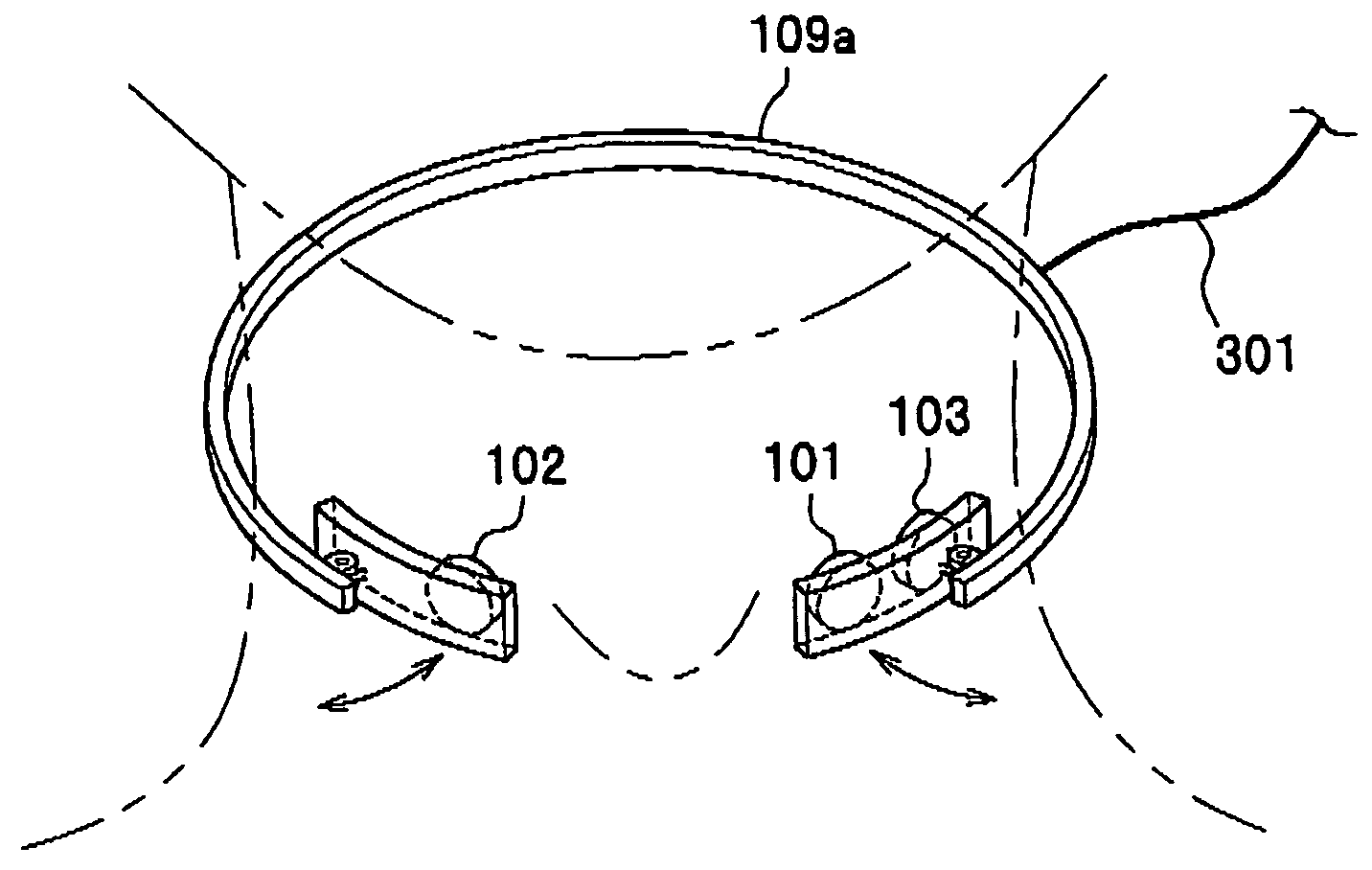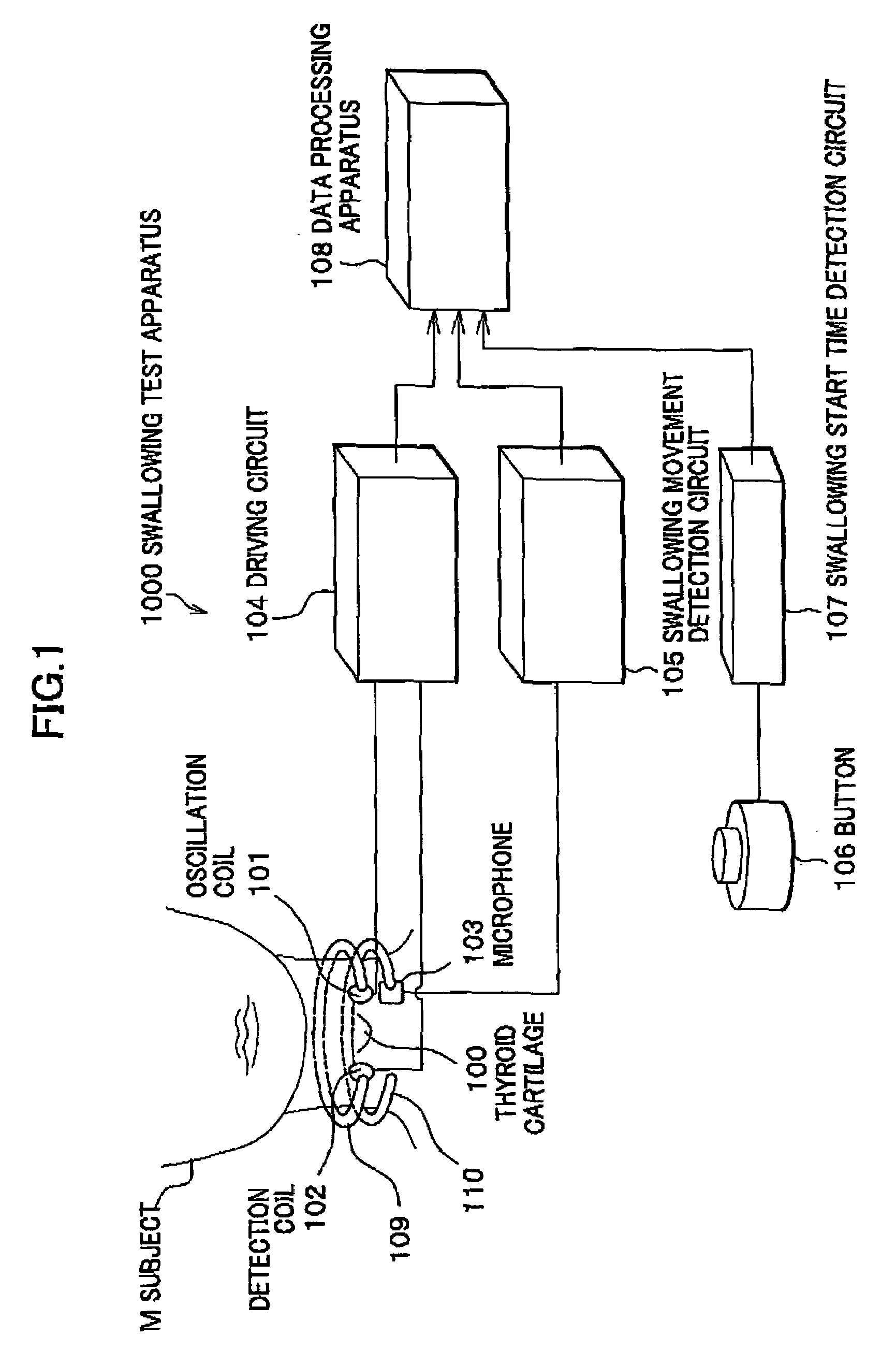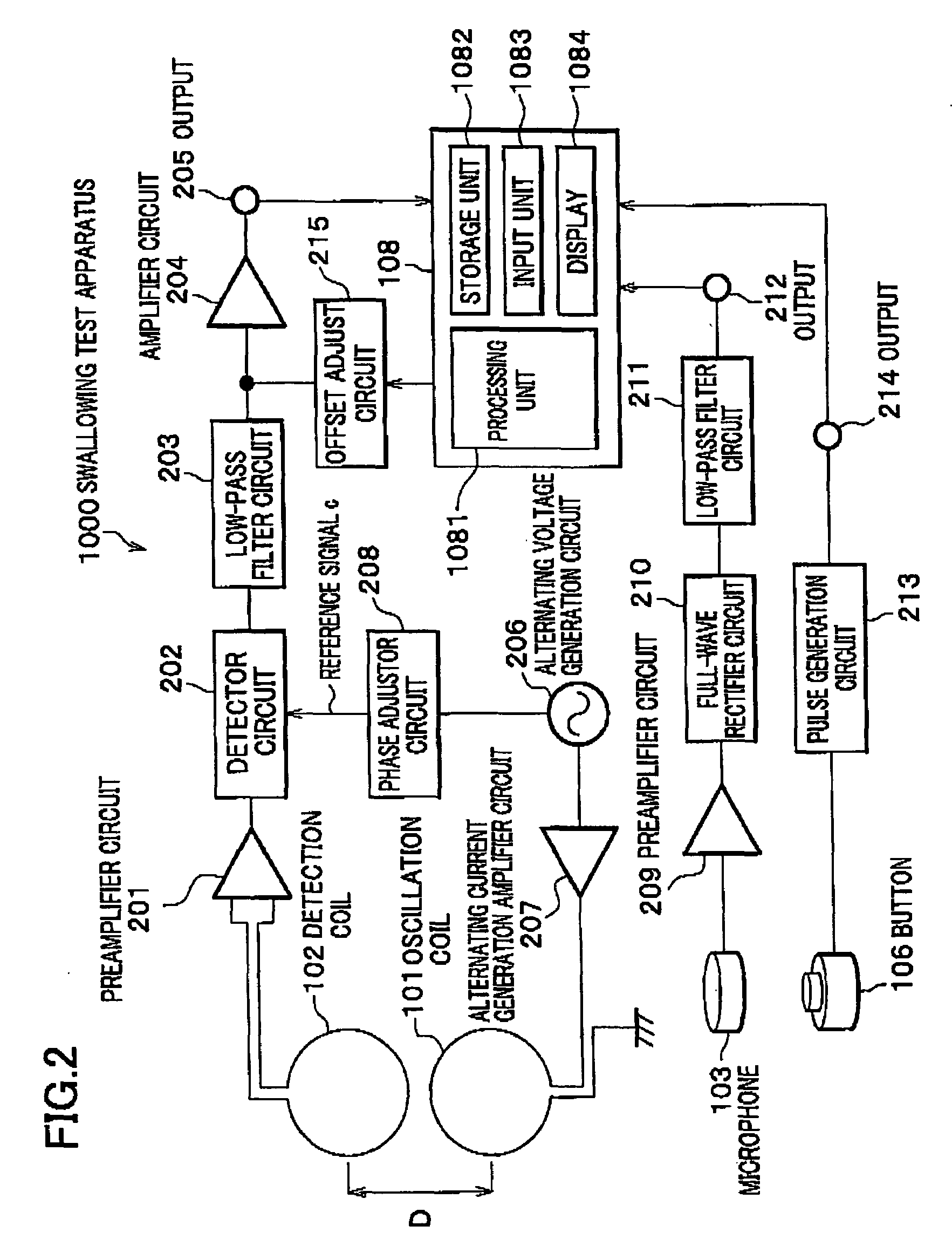Therefore, when aged people who are short on
physical strength are suffered from dysphagia, they are exposed to dangers in which they may lose their life.
However, the VF method requires extra caution because it has a risk that the subject may misswallow the bolus of food or be suffocated.
However, the VE method also has disadvantages that subjects feel uncomfortable when a
fiber is inserted through their
nasal cavity, and because a
fiberscope apparatus is necessary, a test for dysphagia is still not simple.
Thus, the VE method has not been prevailed.
Furthermore, the VE method also has a problem that when a bolus of food is transferred into the
pharynx, the wall of the
pharynx is closed and the space in the
pharynx becomes smaller, the view through the
fiberscope becomes obscure, and thus the swallowing movement can not be monitored in the
time zone in which the organs related to the swallowing movement moves at most in a short time.
The method disclosed in JP Unexamined Patent Publication (Kokai) No. 2005-304890, however, has disadvantages that data obtained by the electromyogram, the swallowing sound and the acceleration sensor has to be organized into
database and patterns of the data has to be learned by neural networks in order to identify dysphagia, which is
time consuming and troublesome.
Furthermore, JP Unexamined Patent Publication (Kokai) No. 2005-304890 does not disclose how to differentiate a subject with dysphagia and a healthy subject, and thus it is difficult to use the method in practice.
As described above, JP Unexamined Patent Publication (Kokai) No. 2005-304890 does not disclose techniques of comparing the waveforms of each kind of data, directly determining the degree of dysphagia based on the waveforms of each kind of data, and determining the degree of dysphagia easily.
Thus, the method disclosed in the JP Unexamined Patent Publication (Kokai) No. 2005-304890 is poor at visual representation, and it is difficult to determine the degree of dysphagia clinically.
Thus, non-patent article 1 also does not disclose techniques of comparing the waveforms of each kind of data, directly determining the degree of dysphagia based on the waveforms of each kind of data, and determining the degree of dysphagia easily.
Therefore, the method disclosed in non-patent article 1 is also poor at visual representation, and it is difficult to grasp the degree of dysphagia clinically.
However, the four pressure sensors disposed apart from each other are not enough to monitor a series of up and down movements of the
thyroid cartilage, and the method only has an accuracy of obtaining the time it takes for a patient to complete the swallowing movement.
Furthermore, the method also has a
disadvantage that the magic tape has to be wound around the neck of a patent, which is uncomfortable for the patient.
Moreover, non-patent article 1 and JP Unexamined Patent Publication (Kokai) No. 2006-95264 does not disclose techniques of comparing the waveforms of each kind of data, directly determining the degree of dysphagia based on the waveforms of each kind of data, and determining the degree of dysphagia easily.
Thus, the methods disclosed in non-patent article 1 and JP Unexamined Patent Publication (Kokai) No. 2006-95264 are also poor at visual representation, and it is difficult to grasp the degree of dysphagia clinically.
However, indifferent electrodes or earth electrodes are necessary in a method using an electromyogram as disclosed in non-patent article 1, which increase the number of electrodes, making it troublesome to manage the electrodes.
This problem is inevitable as long as an electromyogram is used.
In a method which uses an electromyogram, when a patient himself or an untrained nurse measures swallowing, it is difficult for them to position the electrodes accurately and manage them properly.
Moreover, when disposable electrodes are used, there is also a problem that the cost of the disposable electrodes is high.
In this method, a swallowing sound is mainly detected, but a detected
signal is affected a little by the movement of the laryngeal part and it is difficult to separate these signals, and thus the method is not suitable for evaluating dysphagia.
As describe above, because apparatuses used in the VF method and the VE method are large and require a user to be skilled, everybody is not allowed to use the apparatuses to measure swallowing at
bed side.
The methods disclosed in JP Unexamined Patent Publication (Kokai) No. 2005-304890, JP Unexamined Patent Publication (Kokai) No. 2006-95264 and non-patent article 1 have problems of positioning or managing of electrodes because the methods use an electromyogram, which restricts those who can use these methods.
Further, JP Unexamined Patent Publication (Kokai) No. 2005-304890 and non-patent article 1 disclose the methods in which measured data of each kind is analyzed independently, and do not disclose a method for analyzing various kinds of data as a whole or a method for displaying the result of the analysis of the various kinds of data.
 Login to View More
Login to View More  Login to View More
Login to View More 


